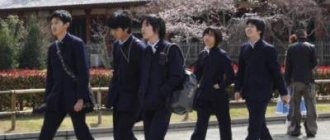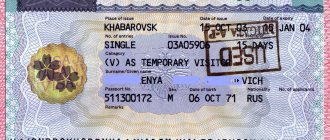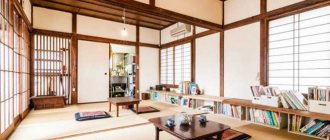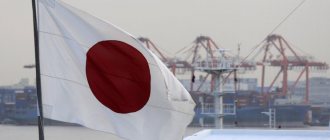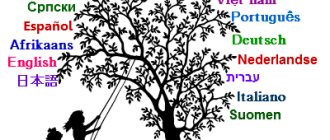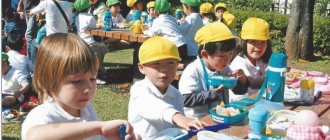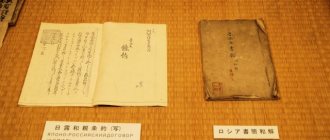Japan, one of the most developed countries in the world, has been attracting the attention of millions of foreigners for decades. Such interest in this truly unique state is associated not only with active economic development, but also with the characteristics of its culture, history and traditions, with unique nature and architecture.
One of the ways to immerse yourself in this amazing environment is to enroll in a higher education institution in Japan, whose graduates can easily find prestigious, well-paid jobs in the most famous companies in the world.
Who can become a student at a Japanese university?
Studying at a Japanese higher education institution has now become more accessible. First of all, we are talking about simplifying the admission procedure, including for applicants coming from the countries of the former CIS. The thing is that in the mentioned states, for the most part, the concept of secondary education with an eleven-year period of study is implemented. Moreover, until recently, 12 classes were required for admission to a Japanese university. Now the requirements for Russian citizens have been simplified and for admission to most universities a complete secondary education (11 grades) is sufficient, however, for citizens of other countries the conditions remain the same.
In light of the significant simplification of the stay of foreigners on the territory of the state, the Japanese government has somewhat simplified the requirements for foreign applicants. Of course, having a complete secondary education is not the only condition for foreigners wishing to obtain higher education.
Tourists who have visited the Japanese islands at least once have had the opportunity to see that in the cities it is quite difficult to find anything in English: signs, signs and indicators are made using hiragana or katakana. A similar situation has developed in the higher education system. The Land of the Rising Sun honors its traditions and cultural values and, of course, its language, as one of the signs of the nation’s self-determination.
To obtain higher education, proficiency in Japanese is a prerequisite. Unlike many other countries, in particular Western European ones, where teaching for foreigners in English is widely practiced, in Japan the educational process is mainly conducted in Japanese, with the exception of some special language subjects.
Therefore, fluency in Japanese is a prerequisite for admission to university. This is what in most cases becomes an obstacle to foreigners enrolling in a university. The good news may be the fact that in light of recent changes, Japan is becoming more and more welcoming to foreign citizens. Universities are gradually introducing instruction in English.
Language schools in Japan
Language schools in Japan are designed primarily for applicants who need to improve their language skills to enter a university. These courses are usually long-term—from six months—and intensive. The most intensive program includes classes 5 times a week for 4 academic hours. Training costs an average of 300,000 for 6 months. The amount depends on the intensity of classes, additional cultural program and geographical location of the school - in Tokyo prices are one and a half times higher.
Education systems in different countries
All articles about studying abroad on "Subtleties"
- Australia
- Great Britain
- Germany
- Greece
- Spain
- Canada
- China
- Malta + English
- New Zealand
- USA
- France
- Czech
- Switzerland
- Japan
Best Universities in the World
- UK Universities: Eton, Cambridge, London and others
- Universities in Germany: Berlin im. Humboldt, Dusseldorf Academy of Arts and others
- Universities in Ireland: Dublin, National University Galway, University of Limerick
- Universities in Italy: , Bologna, Pisa, University for foreigners in Perugia
- Universities in China: Beijing, Beida, Zhejiang University and others
- Lithuania: Vilnius University
- US Universities: Harvard, Yale, Princeton and others
- Universities of France: Sorbonne, Grenoble, Montpellier and others
- Universities of the Czech Republic: Higher School of Economics in Prague, Charles University and others
- Universities in Japan: Kyoto University and Tokyo University
Subtleties of education abroad
- Foreign for businessmen - subtleties of programs
- UK or USA - where to study?
- A short educational program about studying abroad
- Why learn English in Malta
- Not just “English” - where and how to learn other languages
- Educational tours for children
- Education abroad: latest trends
- Scholarships and grants for studying abroad
- Exclusive language schools abroad
- Language courses abroad - detailed educational program
- FAQ about studying abroad
Japanese isn't that scary
It's no secret that Japanese is considered one of the most difficult languages, but nothing is impossible. After all, language is a living means of communication, so it is possible to master it; it is important to choose the right method.
Modern technologies offer a lot of ways to learn a foreign language, ranging from banal printed self-instruction books and online resources to special courses at leading higher educational institutions.
Some foreign applicants say that they decided to enroll in a university in Japan while still in high school. They had enough time to learn this, at first glance, complex language, with its own special phonetics and no less special alphabet. But most often the thought of getting an education in Tokyo or any other Japanese city comes in the senior year, when there is practically no time left to learn a foreign language. In such cases, tutorials or online resources are unreliable helpers.
The most effective and fastest way to speak a foreign language is one that involves complete immersion in the language atmosphere. Of course, no one discounts the opportunity to gain first-class knowledge from teachers at local universities, but any method that does not involve constant language practice will not be so effective.
Thus, it is necessary to prepare for a trip to Japan, because only here you can hear the real living language of the descendants of the samurai. Only here is it possible to abstract from native speech, which sometimes makes it very difficult to switch and concentrate on the foreign language being studied.
General characteristics of universities
The educational system of Japan was built on the basis of American and European experience, so the general structure here is traditional, but the Japanese were able to preserve their own experience, reflected in the principle of chaebol, resulting in a unique system of high-quality multi-level education.
The total number of universities in the country is approaching 700, of which just over 10% are public, the rest are all private. There are provincial institutes specializing in a couple of professions in which only 300–400 people study. But it is thanks to small universities that the number of students in Japan reaches 2.5 million.
To enter any institution related to higher education, an applicant passes 2 levels.
- A person takes the first test at the national student center, it is called the test of the first elementary stage.
- Subject to the required number of points, the applicant can begin taking exams at the university of his choice. The higher the knowledge of the future student, the wider the list of universities that will accept him and the specialties for which he can apply.
The first 2 years are spent studying general basic disciplines, such as philosophy, natural science, history, etc. During this same period, a person masters the basics of his future profession.
After completing this cycle, the student must decide on the choice of a specific specialty. If after 2 years a person becomes disillusioned with his chosen profession, he can easily change faculty and even university. Over the next 2 years, students study their specialty in depth
The qualification ladder in Japanese higher education is similar to the European one, only the names have been changed. Upon completion of the bachelor's degree, the student receives the title of gaku-shi; the master's degree gives the opportunity to receive the title of shu-shi. Specialists in Japan are called haku-shi, which corresponds to the European Ph.D.
Regardless of the specialty, faculty or university, a person must study for 4 years to receive the coveted diploma. The only exception is traditional medicine and its subsidiary fields, such as veterinary medicine and dentistry. They study at these faculties for 6 years, after which they receive the title of gaku-shi and then go on to internship.
Important! People who, for objective reasons, have suspended their studies will be enrolled in the university for another 8 years, so expulsion in the land of the rising sun is very rare.
In Japan, there is a semester structure, the year is divided into 2 semesters, during which students try to score as many credits as possible. Over 4 years, all points are added up and based on the results, the corresponding title is assigned, the minimum is 124 points.
Language school is the best way to speak Japanese
Upon arrival, foreigners are immediately immersed in a completely different atmosphere. As we already mentioned, in Japan it is difficult to even find signs in any other language. Japanese speech can be heard from all sides here.
It is the immersion effect that becomes a key and effective way to help you quickly master the language in language schools in Japan. In addition to theoretical material and a large number of interesting exercises during classroom lessons, students receive something more valuable - live, real language practice in communication with peers and new friends.
The program of most language schools is structured in such a way that students begin to feel comfortable after just a few lessons. Of course, this does not mean that knowledge will be given easily - it is impossible to achieve success without your own efforts.
While acquiring knowledge in courses at a language school, students live in special student dormitories, but homestay accommodation is often arranged. In this case, a double effect is achieved. Firstly, during classes the student is completely immersed in the language environment. Secondly, upon returning from class, he will continue to be surrounded by the same language environment. This ensures the constant presence of the Japanese language in the student’s life, which allows him to quickly adapt to previously unfamiliar speech.
Features of Japanese education
For a long time, the Japanese education system functioned with a bias towards the Sino-Korean teaching method. Only at the end of the 13th century did the situation change in favor of national priorities. For some time, private education and homeschooling were widespread. After 1868, the Japanese tried to adopt Western-style teaching methods and structures. A number of reforms to the educational system were carried out in Japan after World War II. Ultimately, a powerful educational structure was created - one of the best on the planet.
Conventionally, the entire cycle of education in Japan is divided into compulsory and optional. The first is based on preschool, primary, secondary education. The second is studying at senior level schools and universities. The academic year officially begins in April and is divided into three trimesters. The duration of the first is from 6.04 to 20.07, the second - from 1.09 to 26.12, the third - from 7.01 to 25.03. The time between trimesters is reserved for vacations.
Pre-school, primary and secondary education stages are compulsory
How to improve your knowledge?
Language schools are designed not only for those who begin learning Japanese from the basics, but also for more advanced students who have previously mastered the language at a certain level.
The variety of programs allows each student to choose the best option, intensity and duration of study. As practice shows, students who have studied at a language school, in most cases, successfully pass the Japanese language exam, which, by the way, must be proficient at a level of at least N2-N1 if you plan to enter a university in the future.
How to enter a university?
If an applicant comes from a Russian region, he should first continue his studies . Since in Russia they graduate from school in the 11th grade, in Japan the period has been increased to 12 years. Here are the options:
- There are specialized schools abroad You can get there if you know Japanese. Despite the fact that universities are introducing programs in an international language, schools and courses are conducted exclusively in the state language.
- You will also have to take language courses and pass testing. The certificate must be presented to the university at the time of submitting all documents.
- Separately, you need to submit a certificate of completion of specialized two-year courses in your home country after graduation. There are universities that refuse to accept students under 18 years of age and with an 11th grade certificate.
After completing the courses, passing exams and testing, you need to pass another test in the Japanese terminological language - Nihongo Noryoku Shiken (日本語能力試験). The document must be marked 2JLPT, which indicates successful passing of the test. Universities considered the most prestigious will require a grade of 1 JLPT. The first category increases the chances of admission, but not all native Japanese can get it.
Advice: In Russia, the Japanese language exam can be taken every few years. Testing is carried out by the Japanese Foundation 国際交流基金, which issues an international certificate. In Japan, the certificate can be obtained from the representative office of the Japanese Association for International Education JAFIE 全国国際教育研究協議会.
Features and nuances of training
To save on higher education, you can use your bachelor's degree, if you have one. Students who have already graduated have the right to enroll in a bachelor's degree in Japan. The cost of training will be even lower. You will have to pay for flights, travel to the apartment, and rent yourself. Also interesting to know something about scholarships:
- They are awarded not only to excellent students, but also to those who are interested in the traditions of the country. Japan is ready to forgive a foreigner and make a discount if he dresses in national clothes and accepts their values.
- The scholarship can be received under the program only after admission to the university . The state will first make sure you have good grades and then accept the scholarship application for consideration.
- The scholarship covers 80-90% of housing costs. Income from a part-time job will cover living expenses for 5-7 days.
- Current students from Russia can qualify for discounts when transferring from university to university . But this applies only to those who are in their first year and do not have a complete higher education. Requirements for certificates and Japanese courses remain in effect.
- There is additional financial assistance from private commercial foundations. But students are required to work there for free for some time, do charity work, hold concerts and be animators on national holidays.
The university takes into account not only the student’s grades. The calculation takes into account his financial situation, level of income at work (if he works), academic performance, and general information about behavior. The size of payments is affected by both the gender and age of the student.
Studying in one of the most expensive countries in the world allows you to save money
Of course, we have all heard that Japan is very expensive, and some are sure that it is generally impossible for an ordinary student to survive here, especially from countries with low average incomes. For example, for Belarusians or Russians the price of courses may seem high. On the one hand, such statements have good grounds, but on the other hand, everything is not so scary.
In recent years, the Japanese government has been pursuing an active policy of loyalty to foreigners. The authorities intend to increase not only the number of foreign students, but also the number of foreign workers.
Part-time work while studying also has a positive impact on the process of language acquisition, because while working, the student continues to practice the knowledge acquired during classes.
Secondary school education (junior level)
Traditionally, Japanese children begin to go through the secondary school stage at the age of twelve. The entire period of study takes three years and is also included in the compulsory education scheme. Subjects studied:
- algebra and geometry,
- Japanese (additionally English),
- biology,
- chemistry,
- geology,
- geography,
- physics,
- social science,
- story,
- art,
- labor skills,
- Physical Culture.
As part of an additional class hour, the following are studied: the history of the region, religion, valeology, pacifism, etc. An indispensable attribute of a high school student is a school uniform. Just like in elementary school classrooms, cleaning of premises by students is practiced.
In public schools, girls and boys study in the same class
As a rule, state educational institutions operate according to the scheme of general classes, where boys and girls study together. However, there are a number of private schools that practice single-sex education . Along with regular educational institutions, there are secondary schools for children with disabilities.
…Enrolling in the Japanese language school Yu Language Academy, studying and staying here in Japan is one of the important and very significant periods in my life. I believe and hope that “today” will become an impetus for an even more important “tomorrow”, but also a “future”...
Guboglo Irina
https://yula.jp/ru/voice-ru/
Senior high school level
Improvement of education is provided by senior secondary schools, which are, rather, a class of humanitarian or technical schools. At this level, training begins at the age of fifteen and lasts for three years. Education at the upper secondary level is no longer compulsory . And yet, about 95% of Japanese traditionally go through this level of education.
Video about Japanese schools
There are approximately equal numbers of public and private schools. Regardless of your status, you must pay for training. The main goal of high schools is to prepare students for entering a university. Along with the general subjects of compulsory study, students are taught:
- computer science,
- foreign languages,
- agronomy,
- medical basics,
- basics of industry,
- trading business,
- fishing,
- economy,
- political science,
- sociology,
- ethics.
At the senior level of secondary schools, extra-curricular activities are well developed. After the main hours of training, youth attend various clubs and sections:
- judo,
- kendo,
- kyudo,
- athletic,
- calligraphic,
- political-economic.
At Nanao City Senior High School, children wear the Sailor uniform.
One of the mandatory requirements in the learning process is the presence of a school uniform. Maintaining cleanliness and order in school premises is the responsibility of students.
...At first I planned to just go. There is not enough information in Russia, and I wanted to go and make up my mind here. Basically, I went with the goal of learning Japanese, while I planned to look for work in Japan. I already graduated from a university in Russia with a degree in design and worked. I thought that I would learn Japanese to the second level and look for a job. But when I arrived, I decided that I would go to college...
Lena
https://nihon-go.ru/zhizn-i-uchyoba-v-yaponii-chast-2-kak-stat-mangakoy-v-yaponii/
Study in Japan with gaku.ru
Gaku.ru is a Japanese company that has been organizing language training in Japan for many years. The peculiarity of our company is that we work with students of different nationalities, usually from the countries of the former CIS.
- gaku.ru specialists will help you choose not only a suitable program, but also decide on a school based on your budget, level of language training and personal wishes.
- Gaku.ru provides assistance in preparing all necessary documents.
Contract training and free higher education
According to the Japanese themselves, student life is one of the easiest and most carefree periods in their lives. An uninterrupted series of preparatory courses, thematic clubs and intense schoolwork gives way to the measured flow of student life. At the same time, the Japanese attitude towards learning remains unchanged, since from the moment they enter preschool institutions until they graduate from university, it occupies a priority position in their lives.
The training program in higher educational institutions, especially the first two years, is not particularly difficult, since it is aimed at consolidating existing knowledge. At the same time, education in Japan is mostly paid, and even in state universities the number of budget places is strictly limited. Despite this, many strive to obtain higher education.
Free education is the highest privilege that must be earned. At the same time, not only the training itself is paid, but also all accompanying aspects, such as food, accommodation, travel and much more.
The first year of stay at the institute is the easiest for a student in terms of workload, but the most difficult from a financial point of view for his parents. The cost of studying in Japan depends on many factors, among which the prestige of the university takes a leading position. On average, to pay for the first year of study at a more or less decent institute, you need $8,000–9,000. At the same time, all subsequent years are much cheaper, since their cost is about 5,500–6,000 dollars.
In addition, all associated costs must be paid. For example, the cost of living depends on the city and region of the country. For renting housing in the capital or another metropolis you will have to pay 800–1200 dollars per month. At the same time, accommodation in a hostel will cost much less and will be only 400–450 dollars.
The annual cost of studying at universities in Japan will be about $15,000–$22,000, excluding food and recreation.
Think about your training now
If you decide to enroll in a university in Japan, you should not postpone the issue of future studies indefinitely. The sooner you start learning Japanese, the easier and faster you will master it.
You can learn the basics of a foreign language at home, and go to Japan to improve your acquired knowledge.
And finally, we cannot help but remind you that the Japanese language opens the door to a world of limitless possibilities. The leading companies in the world are Japanese companies that are happy to invite foreign specialists who are fluent in Japanese and English to join their teams. In addition, knowledge of Japanese will help you achieve success not only in Tokyo, but also in any other country. And most importantly, speaking Japanese will be your ticket to entering a university, the diploma of which will be important in your career.
Education system in Japan
The education system in Japan has remained virtually unchanged since the 6th century. In essence, it is not much different from other developed countries of the world, but there are some nuances. Before school, children go to kindergarten and nursery. There they learn to read, write, count and come to first grade fully prepared. Schools in Japan include three levels - elementary, middle and high, with only the first two being compulsory and free of charge. After school, as in most other countries of the world, graduates enter universities. Those who were unable to enter the university (entrance tests in Japan are quite serious) go to colleges or technical schools, where they receive an applied specialty, almost immediately go to work and complete their studies without interrupting work.
The school year in Japan consists of three trimesters. The very first one begins on April 6th - right around this time the cherry blossoms begin to bloom - and lasts until July 20th. The second begins on September 1 and ends on December 26, and the third lasts from January 7 to March 25.
Higher or university education system
Almost 800 universities of various levels provide higher education to Japanese students. All of them are divided into state, national and private. Students need to spend four years of study to obtain a bachelor's degree. In some cases, a unique specialization requires completion of a six-year undergraduate course. A minimum of 2 years is allotted for master's studies. Three to four years must be spent on a postgraduate course.
Video about studying in Japan
Higher education in Japan is provided only on a fee basis . Meanwhile, the amount of tuition fees depends very much on the specialization and on the educational program.
Table: cost of education in Japan per year of study for Russians and not only
| Type of educational institution | Cost of education, JPY per year |
| Junior colleges | 1 100 000 – 1 350 000 ($10680 – $13100) |
| Colleges of Technology | 320 000 ($3000) |
| Vocational colleges | 980 000 — 1 411 000 ($9740 — $13350) |
| Japanese language institutes | 415 000 – 997 000 ($4100 – $9700) |
| Universities (undergraduate) | 770 350 – 4 920 500 ($7650 – $48900) |
| Universities (postgraduate studies) | 768 000 – 1 470 000 ($7630 – $14600) |
*JPY—Japanese yen.
The best and most popular Japanese universities are:
- Tokyo University,
- Kyoto University,
- Tohoku University,
- Osaka University,
- Tokyo Institute of Technology.
Photo gallery of popular universities in Japan
Oldest public university in Japan
Tohoku University is an educational institution that formerly had the status of an imperial university.
Kyoto University ranks second among the best universities in Japan
The University of Tokyo is a well-known university in Japan throughout the world.
The State Scientific and Technical University trains unique specialists
The University of Tokyo is a well-known Japanese university throughout the world, with unique research laboratory complexes . Provides the opportunity to study at any of ten faculties. Accepts up to 30 thousand students, including almost 3 thousand foreign ones.
Kyoto University is a national university, famous for the fact that at one time it was one of the imperial universities . It ranks second in the hierarchy after the University of Tokyo. Provides educational process for 22 thousand students.
Tohoku University is an educational institution that also had the status of an imperial university in the past . It has ten faculties, where 18 thousand students receive education. It is among the universities that have been selected by the Japanese government to introduce international education practices.
Osaka University is the largest university in Japan . The oldest educational institution, which in terms of the number of students is the largest in the country. Has the status of a state university. Officially opened as the sixth imperial educational institution.
Tokyo Institute of Technology is a prime example of a scientific and technical higher school . Managed by government agencies. The university has six schools and several research centers. Students have a choice of more than 40 faculties to study.
Video: overview of the University of Tokyo
Exotic subjects in the school curriculum
Home Economics (compulsory subject for all)
From the fourth grade, children in Japanese schools begin to be taught the wisdom of housekeeping. The ability to sew on buttons, cook food and operate household appliances, plus skills to care for children and the elderly, are taught to all students, without making any gender differences.
It wasn't always like this. Until the mid-nineties of the last century, only girls were taught home economics, while boys attended manual labor classes. However, thanks to changes in the school curriculum, a whole generation of young people has grown up in the country, who were taught at school to hold a needle and thread in their hands, plan a menu and care for a child. Perhaps this is why young Japanese men, having started a family, are more actively involved in household chores and take part in raising children than the older generation.
Moral Lessons and Contemplative Lessons
Exotic school subjects include lessons in contemplation and morality.
As part of the first, children are taught to see the beauty around them - the teacher draws the attention of schoolchildren to the connection between flora and fauna, the peculiarities of the development of all living things in nature, the colors of the seasons. It is noteworthy that students not only admire the world around them, but also receive grades for this and pass exams in the subject
Moral education is an independent discipline that is taught at all stages of schooling. Any educational program necessarily includes its elements. In moral education lessons, children and adolescents examine many fictional situations and examples from history, noting in them universal human values and virtues: hard work, determination, the desire for freedom, justice, achieving harmony with nature and in relationships between people.
However, it is not for nothing that collectivism is considered the most important distinctive feature of the Eastern mentality: the main task of moral education lessons is to help students realize their own place in the family, class, school, state and world, while being aware that the greatest value is the opportunity to feel part team.
Scholarship programs
There are a large number of scholarship programs for studying at Japanese educational institutions.
1. Scholarships awarded by individual educational institutions 2. Japanese Government Scholarships (MEXT) 3. JASSO Foundation Scholarships 4. Joint Japan / World Bank Foundation Scholarships for students from developing countries 5. Other scholarships from private foundations 6. Scholarship from the Ministry of Education, Culture , Sports, Science and Technology Japan (Monbukagakusho: Mext)
Perhaps MEXT is one of the most popular international scholarship programs for foreign students wishing to study at universities in Japan. Selection is carried out through Japanese embassies and consulates in each country. The winners of the competition are provided with scholarships from the Japanese government.
To participate in the competition, you must select a specialization in accordance with the list presented in the Competition announcement on the website of the Japanese Embassy. From the proposed list of specialties (including the humanities, social sciences, and natural sciences), you can choose no more than three subjects.
Citizens of the country in which the application is submitted can take part in the competitive selection for participation in the program. School graduates with complete secondary school education and university students can participate in the competitive selection. Applicants must be prepared to learn Japanese and study in Japanese , have an interest in Japanese culture, and a desire to deepen their understanding of Japan while studying and living in this country.
Typically the duration of the program is 5 years. The program usually includes 1 year of preparatory course in Japanese language and other subjects. Students who are proficient in Japanese or who are enrolling in programs that do not require knowledge of Japanese may skip the Japanese language preparatory course. In this case, the internship lasts 4 years.
Details about this program are published on the website of the Japanese Embassy.
Information about the Ministry of Education, Culture, Sports, Science and Technology of Japan can be found on the website https://www.mext.go.jp/english/
There is also a lot of useful information about this scholarship available on the Study in Japan Comprehense Guide website https://www.studyjapan.go.jp/en/toj/toj0302e.html
What is the school year like in Japan: interesting facts about schools
Of course, studying in this country is difficult, but it’s fun. The younger generation has the opportunity to develop harmoniously, but the most important thing is to make their own choices and decide their own future
To enter an educational institution (whether it is a university or a primary school), you need to pass an exam. If a student does not score the required number of points, he can try his luck next year
In Japan, students' appearance is carefully monitored. You cannot dye your hair, wear makeup or jewelry. In anime, you can often see schoolgirls wearing short skirts. In reality, girls' skirts always go below the knees.
Not a single school in the country hires cleaners. Starting from the first grade, students independently clean not only classrooms, but also corridors.
Each class is divided into specific groups of 2-3 people. Each such group is assigned certain responsibilities, for example, organizing events, cleaning the territory, healthcare, etc.
Holidays last only 60 days a year. High school and middle school students are required to wear the school uniform. Each school year begins and ends with ceremonies to congratulate graduates and welcome newcomers.
Particular attention should be paid to clubs and festivals. Japan already had its own educational system in the 6th century.
Residents of the Land of the Rising Sun have always been supporters of early and harmonious development. This tradition is still followed today. In schools, students can attend interest groups (clubs). Each club has its own scientific director. However, he interferes in the activities of students only when some competitions or olympiads are coming up.
Excursions are offered during the holidays. By the way, students travel not only around Japan, but also visit foreign countries. After each such trip, the class must make a wall newspaper, where they describe everything that happened on the trip.
And, of course, the autumn cultural festival. The school buys T-shirts for each class and allocates 30 thousand yen, and the students must come up with an event to entertain the guests. Usually these are fear rooms, performances of creative groups, maid or cosplay cafes.
Japanese elementary school
To enter junior school, Japanese kids take exams. If someone fails the test, they can go to prep school. Here teachers will do everything so that the child can pass the exam next year.
The junior Japanese school is called "segakko". Education here lasts 6 years. The school year lasts three semesters. Just like in Russia, Japanese kids are looking forward to the holidays. When the cherry blossoms first bloom, children begin a new school year.
In lessons, children study natural sciences. These are physics, chemistry, biology, arithmetic, native language, drawing, musical art, physical education and home economics. In primary school, students attend 3-4 lessons daily. Since Japan's population is really high, there can be up to 45 people in a class.
During their time at school, children must learn 3,000 hieroglyphic characters. Of these, 1800 should be known already in primary school. This is the only way to learn to read. Each syllable of the alphabet has two ways of reading and a pair of meanings. In elementary school, students must learn the correct Japanese characters, Chinese alphabet, and Latin alphabet. For teachers, the main task is not teaching children general subjects, but character education, which is called “kokoro”. This unusual word is translated as “mentality”, “heart”, “soul”, “humanism” and “mind”.
The school day most often begins around 9 am. In the morning, classes in a Japanese school are overcrowded. Most often, educational institutions do not use national textbooks. As a rule, the school itself chooses which books to study from. Homework is not given in elementary school. There is also no uniform required; children can wear casual clothing. In many educational institutions, there are no partitions between classrooms and corridors. It is believed that this measure allows the children to adhere to discipline.
After the second lesson there is a big lunch break. Each student must carry chopsticks and spoons with them. Typically, a case for these supplies will be provided on the first day of training. And the kids definitely need to have small tablecloths with them, they are called “lunch mats.”
Types of kindergartens
They are public and private. Among them, for example,
- Hoikuen is a public nursery. Children are accepted here starting from 3 months of age. It works from morning to evening and on Saturday half a day. Children are identified here by contacting the municipal department located at their place of residence. This requires both parents to work. Payment is made depending on the amount of family income.
- Etien is both private and public gardens. Children spend no more than 7 hours in them, from 9 to 14, if their mothers work no more than 4 hours daily.
- Elite - they are patronized by prestigious universities. When a child ends up in such an institution, this is a huge plus for his further education. After that, he will study at the university school and then enter the university without exams. To get here, a child needs to undergo complex testing, and parents need to part with a large sum of money.
Notable schools
The following institutions have been created especially for children of Russian emigrants:
- , Tokyo. Teaching is conducted according to the Russian school curriculum.
- , Tokyo: secondary general education, according to Russian standards (11 grades), with in-depth study of the Japanese language.
- "", Toyama: they teach Russian both as a native language and as a foreign language. This is the second school - its program is designed so that children can combine education at Dandelion and at a Japanese school. Accepts children from 4 years old.
- "", Tokyo. Works with children from 3 to 15 years old. Offers a variety of courses, including online learning, parenting courses, and one-on-one tutoring.
The most famous of the country's regular schools are:
- , Yokosuka.
- , Saitama.
- , Tokyo.
- , Fukuoka.
The most popular international schools are:
- , Tokyo.
- , Tokyo.
- , Tokyo.
- , Nagoya.
- , Okinawa.
It’s convenient to search for an establishment that suits your location and specialization using the website.
Timetable
Just like in Russia, but unlike the USA, primary and secondary schools are usually located within a 5-10 minute walk from the student's home. Of course, in rural areas the school may be significantly further away.
School classes usually start at half past eight in the morning. Every Monday before classes begin, students line up and the school principal speaks to them for 15 minutes. On other days, this time is reserved for school-wide announcements and attendance. Attending school diligently is of great importance in Japan. However, a truant may run away from school after the first lesson.
The duration of lessons in elementary schools is 45 minutes, in middle and high schools - 50 minutes. Between lessons there are small breaks of 5-10 minutes, after the fourth lesson (at about half past one) there is usually a long break for lunch - about 60 minutes. Students who try to start eating breakfasts brought from home before the official start of lunch are punished, especially if they eat during lessons. In elementary school there are rarely more than four lessons a day. In high school their number can reach up to six.
In elementary school there is no homework, but in middle and high school there is a lot of homework, so despite having days off, Japanese high school students are the busiest people in the country.
